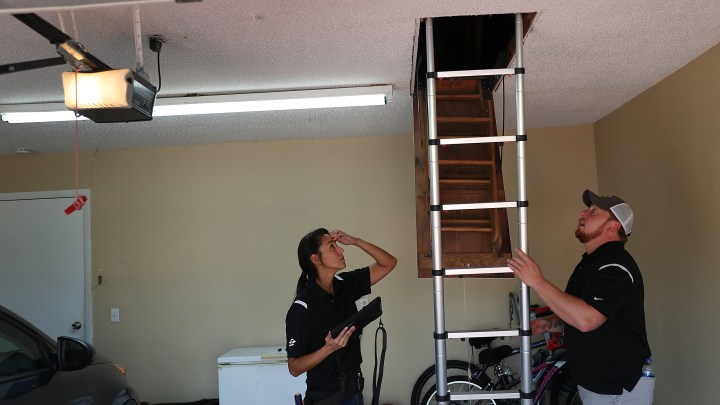
What the demise of Zillow Offers means for the ibuyer model
What the demise of Zillow Offers means for the ibuyer model

Last month, Zillow announced that it was pausing its buying of houses for the rest of the year, in part so it could catch up with a backlog of renovations.
This week, Zillow said it’s winding down its house-flipping business altogether, having failed to accurately predict where prices were headed. That failure cost Zillow more than $400 million last quarter and, in the next few quarters, roughly 25% of workers will lose their jobs.
Zillow was just one of several so-called ibuyers, real estate technology companies that make instant offers on houses, fix them up a bit and sell them to the next buyer.
What does the demise of Zillow Offers mean for that business model?
When Amanda Reilly and Josh Varon started shopping for a house this spring in Portland, Oregon, they saw a red-shingled bungalow with two bedrooms and two baths near a park. But the list price — $560,000 — felt like too much for such a little house in that neighborhood.
“And so I kept it as my favorites on my computer, and I was like, ‘I’ll come back to it at some point,'” Reilly said.
She did come back to it a few times. And the price kept dropping.
“I think it was like $20,000 down and then it was like another $10[,000]. And then I think they dropped it another $10[,000]. And that’s when we were like, ‘OK, that seems a little bit more reasonable,'” she said.
Now, Varon is installing new flooring in the basement. They moved in last month and ended up paying about $520,000.
That was just $300 more than Zillow had paid for it four months earlier.
“It’s just challenging to predict future home prices in such a rapid and volatile market for home price appreciation,” said Jeremy Wacksman, Zillow’s chief operating officer.
Earlier in the year, he said that Zillow underestimated how rapidly home prices would rise and then failed to anticipate the recent return to more gradual increases.
“We were undershooting the mark by five-plus percent in one direction, and now we’re seeing, in some markets, we’re overshooting the mark,” he said.
Meaning the company paid too much for houses it now has to sell at a loss.
“There’s a big question here of Zillow versus ibuying. And I see this as primarily a Zillow problem,” said Mike DelPrete, who follows the ibuyer market as a scholar-in-residence at the University of Colorado Boulder.
While Zillow is also a real estate search and online advertising company with mortgage and title services, DelPrete said, competitors like Opendoor and Offerpad started out as ibuyers and have stayed focused on that model.
They’ve also been more cautious. “They saw market changes coming earlier this year, and they started slowing down the purchase of homes, or not paying quite as much money, or increasing their fees,” DelPrete said. “Zillow didn’t, Zillow kind of missed the off-ramp.”
Opendoor and Offerpad have been “flirting” with profitability lately, he said. But home prices aren’t going to keep growing — at least at this pace — forever.
That means it’s going to be harder to make a profit on flipping alone.
“ibuyers are going to have to go back to basics, which is they charge consumers a fee,” DelPrete said. “They try to make money through adjacent services, like mortgage and title services. And they kind of get a very, very small margin but make it up on volume. But we’re not there yet.”
Volume is growing; DelPrete said ibuyers made up almost 2% of home purchases in the last quarter — almost double the quarter before that. Of course, that was with Zillow in the mix. Now, it’s just a seller, with — as of Sept. 30 — almost 18,000 houses to unload.
There’s a lot happening in the world. Through it all, Marketplace is here for you.
You rely on Marketplace to break down the world’s events and tell you how it affects you in a fact-based, approachable way. We rely on your financial support to keep making that possible.
Your donation today powers the independent journalism that you rely on. For just $5/month, you can help sustain Marketplace so we can keep reporting on the things that matter to you.

















